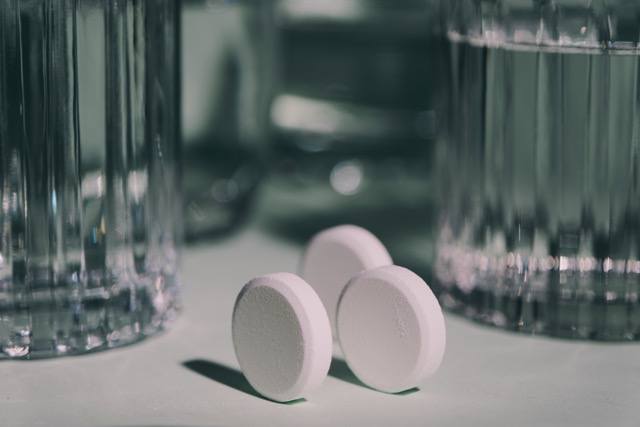The Basics of Aging: What They Are and How They Work
In recent decades, researchers have discovered why we age and which processes are involved.

Ash Edmonds
To study cellular aging, you first need a measure to measure it. This is where biological age comes into play.
Biological age
Everyone ages at different rates. It is therefore important to differentiate between chronological age and biological age.
Our chronological age is the number we celebrate on each birthday and over which we have little influence. Unser Biological Age On the other hand, it is more impressionable. It reflects the general state of health.
Primary signs of aging
In a study from 2013, the nine Characteristics of aging (Hallmarks of Aging) and divided into three groups: primary, reactive and integrative license plate. The primary hallmarks are the fundamental sources of cell damage, while the reactive and integrative hallmarks are relatively responsive. Primary hallmarks are the root causes of aging.
The four primary hallmarks are telomere erosion, genomic instability, epigenetic changes, and loss of proteostasis. In this article, we'll focus on the first three concepts.
Telomere shortening
Telomeres are the protective caps at the end of the DNA, much like the protective plastic at the end of the shoelaces. These caps prevent DNA damage caused by cell replication. Unfortunately, telomeres aren't endless. Each cell division worsens these telomeres until they are critically short and can no longer protect our DNA. After DNA damage caused by replication, the cell activates a DNA damage response. This tells the cell that it is at the end of its life and puts it into a zombie-like state to finally undergo apoptosis, cell suicide.
Telomere wear and aging
Sometimes the last part doesn't go as planned. After the Cell has entered a zombie-like state, known as senescence, it occasionally does not die. In this case, it remains a senescent cell. Cellular senescence involves a number of problems, such as promoting inflammation. In fact, cellular senescence is one of the responsive hallmarks of aging.
Even when things go as planned, the result is cell suicide. Shorter telomeres result in shorter cell lifespans, which is not ideal for longevity. As a result, several studies are focused on maintaining telomere length through lifestyle changes and potential therapies.
Genomic instability
Our cells suffer DNA damage every day. Internally, this is a result of unwanted oxidation due to Free Radicals. This changes their structure, which leads to fractures. There are repair mechanisms that replace damaged DNA molecules, but these mechanisms become less effective as we age. Over time, these breaks accumulate and the cell activates a DNA damage response. This characteristic also leads to apoptosis (programmed cell death) and cellular senescence, a responsive feature of aging.
Epigenetic changes
The epigenome is virtually another layer on the genome. Through DNA methylation, the epigenome controls the activation and deactivation of genes. While our genome is immutable from birth, our epigenome is dynamic.
When our DNA is damaged, repair mechanisms usually interval to replace the damaged DNA molecules. However, DNA repair often involves errors in epigenetic expression. Although the DNA molecule is repaired, its expression is therefore different. This is known as an epigenetic change.
Epigenetic Changes and Aging
A change in gene expression can suppress important genes and put a cell into dormant mode or activate genes that can send a cell into senescence. Most age-related changes that we experience are the result of epigenetic changes.
Our epigenome and DNA methylation patterns are a significant indicator of general well-being and therefore a very good measure of biological age. Our epigenome is also highly responsive to our lifestyles and environment, making it an excellent source of personalized health data. Researching and analyzing the basics of aging not only shows us where we stand, but also how we can improve!
Inferences
There are nine characteristics of aging, which are divided into three groups: primary, reactive, and integrative traits. The primary characteristics are the root causes of aging.
The four primary characteristics are telomere erosion, genomic instability, epigenetic changes, and loss of proteostasis.
Telomeres help us prevent DNA damage caused by cell replication. With every cell division, these telomeres shorten until they are critically short and no longer protect our DNA.
The oxidation of DNA leads to breaks. The repair mechanisms that replace damaged DNA molecules become less effective as we age. When these breaks accumulate, a cell can enter cellular senescence.
If our DNA is damaged, it is subsequently repaired, but the epigenetic code is often misinterpreted. Most of the age-related changes we experience are the result of epigenetic changes.
References
- Lopez-Otín, C., Blasco, M.A., Partridge, L., Serrano, M., & Krömer, G. (2013). TheHallmarks of Aging. Cell, 153(6), 1194—1217. https://doi.org/10.1016/j.cell.2013.05.039
- Aubert, G., & Lansdorp, P. M. (2008). Telomeres and Aging. Physiological Reviews, 88(2), 557—579. https://doi.org/10.1152/physrev.00026.2007
- Chatterjee, N., & Walker, G.C. (2017). Mechanisms of DNA damage, repair, andmutagenesis. Environmental and Molecular Mutagenesis, 58(5) ,235—263. https://doi.org/10.1002/em.22087
- What isepigenetics? : MedlinePlus Genetics. (n.d.). https://medlineplus.gov/genetics/understanding/howgeneswork/epigenome/
Publiziert
15.9.2025
Kategorie
Longevity

Experte
Scientific Terms
Apoptosis
From Greek. apoptōsis = the fall off, e.g. of a leaf
Apoptosis is a strictly regulated physiological process in the form of “cell suicide”, which plays an important role in the development, maintenance and aging of multicellular organisms and in which individual cells are eliminated in a planned manner.
Telomere/Telomere Loss
Gr. Télos' Ende 'and' Télos' Teil '
A telomere is a cap that protects the end of the chromosome from wear and tear, comparable to the awl on the end of a shoelace or the burnt end of a rope to prevent fraying. As we age, telomeres erode to the point where the cell reaches the Hayflick limit. This is the point at which the cell sees the erosion as a break in DNA, stops dividing and becomes senescent.
Genome
The entire DNA sequence of an organism or virus. The genome is essentially a huge set of instructions for making the individual parts of a cell and for controlling the entire process.
Proteostasis
The term proteostasis comprises various interlinked processes that control protein activity at the cellular level.
To study cellular aging, you first need a measure to measure it. This is where biological age comes into play.
Biological age
Everyone ages at different rates. It is therefore important to differentiate between chronological age and biological age.
Our chronological age is the number we celebrate on each birthday and over which we have little influence. Unser Biological Age On the other hand, it is more impressionable. It reflects the general state of health.
Primary signs of aging
In a study from 2013, the nine Characteristics of aging (Hallmarks of Aging) and divided into three groups: primary, reactive and integrative license plate. The primary hallmarks are the fundamental sources of cell damage, while the reactive and integrative hallmarks are relatively responsive. Primary hallmarks are the root causes of aging.
The four primary hallmarks are telomere erosion, genomic instability, epigenetic changes, and loss of proteostasis. In this article, we'll focus on the first three concepts.
Telomere shortening
Telomeres are the protective caps at the end of the DNA, much like the protective plastic at the end of the shoelaces. These caps prevent DNA damage caused by cell replication. Unfortunately, telomeres aren't endless. Each cell division worsens these telomeres until they are critically short and can no longer protect our DNA. After DNA damage caused by replication, the cell activates a DNA damage response. This tells the cell that it is at the end of its life and puts it into a zombie-like state to finally undergo apoptosis, cell suicide.
Telomere wear and aging
Sometimes the last part doesn't go as planned. After the Cell has entered a zombie-like state, known as senescence, it occasionally does not die. In this case, it remains a senescent cell. Cellular senescence involves a number of problems, such as promoting inflammation. In fact, cellular senescence is one of the responsive hallmarks of aging.
Even when things go as planned, the result is cell suicide. Shorter telomeres result in shorter cell lifespans, which is not ideal for longevity. As a result, several studies are focused on maintaining telomere length through lifestyle changes and potential therapies.
Genomic instability
Our cells suffer DNA damage every day. Internally, this is a result of unwanted oxidation due to Free Radicals. This changes their structure, which leads to fractures. There are repair mechanisms that replace damaged DNA molecules, but these mechanisms become less effective as we age. Over time, these breaks accumulate and the cell activates a DNA damage response. This characteristic also leads to apoptosis (programmed cell death) and cellular senescence, a responsive feature of aging.
Epigenetic changes
The epigenome is virtually another layer on the genome. Through DNA methylation, the epigenome controls the activation and deactivation of genes. While our genome is immutable from birth, our epigenome is dynamic.
When our DNA is damaged, repair mechanisms usually interval to replace the damaged DNA molecules. However, DNA repair often involves errors in epigenetic expression. Although the DNA molecule is repaired, its expression is therefore different. This is known as an epigenetic change.
Epigenetic Changes and Aging
A change in gene expression can suppress important genes and put a cell into dormant mode or activate genes that can send a cell into senescence. Most age-related changes that we experience are the result of epigenetic changes.
Our epigenome and DNA methylation patterns are a significant indicator of general well-being and therefore a very good measure of biological age. Our epigenome is also highly responsive to our lifestyles and environment, making it an excellent source of personalized health data. Researching and analyzing the basics of aging not only shows us where we stand, but also how we can improve!
Inferences
There are nine characteristics of aging, which are divided into three groups: primary, reactive, and integrative traits. The primary characteristics are the root causes of aging.
The four primary characteristics are telomere erosion, genomic instability, epigenetic changes, and loss of proteostasis.
Telomeres help us prevent DNA damage caused by cell replication. With every cell division, these telomeres shorten until they are critically short and no longer protect our DNA.
The oxidation of DNA leads to breaks. The repair mechanisms that replace damaged DNA molecules become less effective as we age. When these breaks accumulate, a cell can enter cellular senescence.
If our DNA is damaged, it is subsequently repaired, but the epigenetic code is often misinterpreted. Most of the age-related changes we experience are the result of epigenetic changes.
Referenzen
- Lopez-Otín, C., Blasco, M.A., Partridge, L., Serrano, M., & Krömer, G. (2013). TheHallmarks of Aging. Cell, 153(6), 1194—1217. https://doi.org/10.1016/j.cell.2013.05.039
- Aubert, G., & Lansdorp, P. M. (2008). Telomeres and Aging. Physiological Reviews, 88(2), 557—579. https://doi.org/10.1152/physrev.00026.2007
- Chatterjee, N., & Walker, G.C. (2017). Mechanisms of DNA damage, repair, andmutagenesis. Environmental and Molecular Mutagenesis, 58(5) ,235—263. https://doi.org/10.1002/em.22087
- What isepigenetics? : MedlinePlus Genetics. (n.d.). https://medlineplus.gov/genetics/understanding/howgeneswork/epigenome/
Publiziert
15.9.2025
Kategorie
Longevity

Wissenschaftliche Begriffe
Apoptosis
From Greek. apoptōsis = the fall off, e.g. of a leaf
Apoptosis is a strictly regulated physiological process in the form of “cell suicide”, which plays an important role in the development, maintenance and aging of multicellular organisms and in which individual cells are eliminated in a planned manner.
Telomere/Telomere Loss
Gr. Télos' Ende 'and' Télos' Teil '
A telomere is a cap that protects the end of the chromosome from wear and tear, comparable to the awl on the end of a shoelace or the burnt end of a rope to prevent fraying. As we age, telomeres erode to the point where the cell reaches the Hayflick limit. This is the point at which the cell sees the erosion as a break in DNA, stops dividing and becomes senescent.
Genome
The entire DNA sequence of an organism or virus. The genome is essentially a huge set of instructions for making the individual parts of a cell and for controlling the entire process.
Proteostasis
The term proteostasis comprises various interlinked processes that control protein activity at the cellular level.
.svg)














